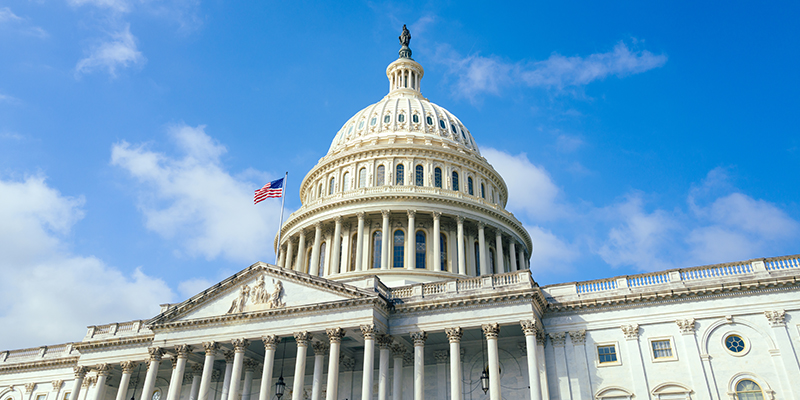There is no denying that Andre Agassi will go down as one of the greatest men’s tennis players the sport has ever seen.
The proof is in his long list of extraordinary accomplishments: 60 men’s singles titles; eight Grand Slam championships; the first player in men’s professional tennis history to win the Golden Slam (all four major titles and an Olympic gold medal); and two-time holder of the world’s No. 1 ranking.
Ironically, Agassi grew up not craving any of it. Just the opposite, in fact, as he explained Wednesday during a keynote talk at NAIOP’s CRE.Converge in Agassi’s lifelong hometown of Las Vegas.
It was Agassi’s father, Mike – a hard-working immigrant from Iran – who dreamt of turning one of his four children into a tennis champion.
“He saw tennis as the fastest road to the American dream,” Agassi said at the start of his conversation with Shaine Anderson, CAE, executive vice president and chief operating officer of NAIOP (and diehard tennis fan). “What does that mean? It means giving your children everything you didn’t have. And to my father, that basically meant money.
“So, tennis was a very necessary part of our day, to put it gently. It was wake up, play tennis, brush your teeth – in that order.”
When it became clear that the three oldest Agassi children weren’t championship material, that left Andre as the last hope to turn his father’s dream into reality.
Sensing talent in his youngest child that his other offspring lacked, Mike pushed Andre to be the best – to the point that even school took a backseat to tennis. Then at age 13, Agassi was shipped off to a renowned tennis academy in Florida to further hone his burgeoning skills.
“Tennis was never my choice,” Agassi said. “There was always this disconnect between what I was good at and what caused me so much angst.
“I saw what tennis did to my siblings and their relationships [with my father]. There was always an unnecessary pressure to it, and it always seemed too important.”
This is why, as Agassi explained to the crowd, he felt far more relief than joy when he won his first major championship. And when he won subsequent majors. And when he reached No. 1 in the world rankings for the first time in April 1995.
“There are all these perceived definitions of success: trophies, certain lifestyles, all that stuff,” he said. “But really, there’s this sort of emptiness to what you’re doing.
“Getting to No. 1 in the world was the last moment that I thought [my tennis success] had a chance at impacting me. And when it happened, I felt nothing.”
Eventually, that all changed. But not before Agassi hit rock bottom. As in, plummeting to No. 141 in the world rankings just 2.5 years after being on top.
At one point during his struggles, the then 27-year-old thought about quitting – only to immediately do a mental pivot, telling himself, “You don’t deserve to quit. You deserve this pain.”
Then as Agassi began taking stock of his life and career, the light bulb flickered on.
“Maybe I didn’t choose my life,” he said he told himself, “But that doesn’t mean I can’t take ownership of it.”
A few months later, Agassi stumbled onto a news show that did a story about the operators of a charter school for underserved children.
“They were just systematically changing the trajectory of these children’s lives – children who didn’t have the luxury to complain about not being No. 1 in the world in something,” Agassi said.
And that’s when the flickering light bulb illuminated like a spotlight.
Within weeks, Agassi took out a $40 million mortgage to build his first charter school in the most economically challenged area of Las Vegas. “My objective,” he said, “was to show that we fail children; they don’t fail us.”
Of course, knowing he was on the hook for $40 million, Agassi realized he couldn’t keep failing at his primary job. More than that, though, planning and building the charter school – which was the impetus for his now highly impactful Andre Agassi Foundation for Education – ignited within Agassi a passion for tennis that never previously existed.
Fueled by that passion, Agassi rededicated himself to the sport he never really wanted to play; took advantage of his immense natural talent; started winning again; and, less than two years after falling to No. 141 climbed all the way back to the top of the mountain after winning both the 1999 French Open (in epic fashion) and U.S. Open.
Since retiring in 2006, Agassi and his wife, tennis legend Stefani Graf, have dedicated their lives to the Agassi Foundation and other philanthropic efforts. That includes partnering with Turner Impact Capital on the Turner-Andre Agassi Charter School Facilities Fund, which has financed the construction of 122 schools serving more than 100,000 students in some of the nation’s most economically depressed areas.
Agassi long ago gained a new appreciation for his tennis life. He understands that had he followed his heart, walked off the court long before winning his first professional tournament and never looked back, hundreds of thousands of kids never would’ve gotten the educational leg-up they so desperately needed.
Furthermore, had he given up on tennis, he wouldn’t have had the platform to tell his inspirational story, including sharing this pearl of wisdom: “Epiphanies don’t change your life. What you do with them can.”
This post is brought to you by JLL, the social media and conference blog sponsor of NAIOP’s CRE.Converge 2024. Learn more about JLL at www.us.jll.com or www.jll.ca.









